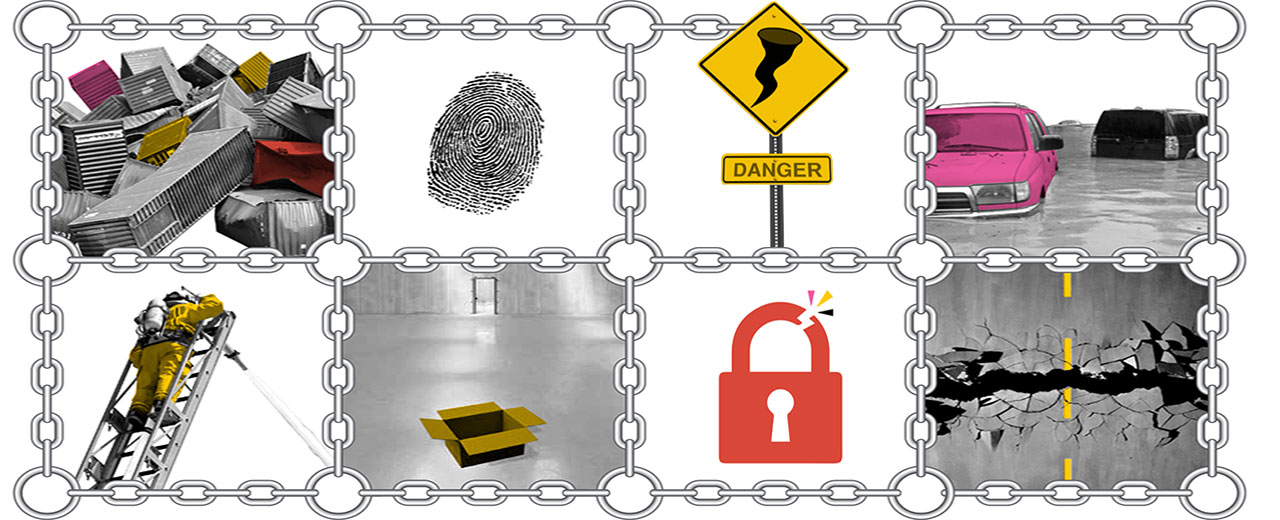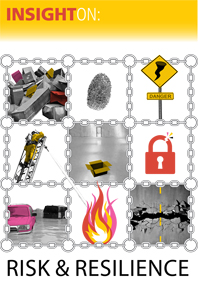
A new report from DHL on risk management and supply chain resilience reveals that 74 per cent of companies surveyed suffered disruption in their supply chain in 2015 as conflict in the Middle East, catastrophic fires at Tianjin port, industrial action in US ports and other global disasters made 2015 a tough year for global supply chains.
The InsightOn: Risk and Resilience report – the latest in the DHL series – highlighted that between 2000 and 2010, losses caused by supply chain disruption averaged US$115 billion per year, escalating to US$380 billion in 2011. The cost in 2015 is expected to be higher with port delays alone, estimated to have cost US retailers already US$7 billion.
“The modern economy runs on interconnected global supply chains, but with distance and complexity come new types of risk from natural and manmade disasters, climate change, and socio-political and economic factors from war to strikes and crime. Any company relying on complex supply chains needs to improve its risk management and our report provides insights and methodologies to help companies develop smarter strategies. The goal is to build resilient supply chains – ones that will also give companies a competitive edge,” said Bill Meahl, chief commercial Oofficer, DHL.
Resilience ups competitiveness
The InsightOn report finds that businesses equipped with an explicit risk management focus stand a far better chance of survival in today’s complex world. By embedding risk management in the purchasing process, taking a collaborative approach and forging new partnerships, companies can create resilient and robust supply networks.
As well as mitigating risk, the new tools and techniques of supply chain risk management bring benefits. Resilient supply chains are flexible so companies can seize opportunities when they arise; delivering when competitors can’t or scaling up production and delivery when market demand increases or raw material prices drop. At the same time, it enables them to reduce production if demand falls.
The InsightOn report finds that too many companies remain focused on efficiency and cost reduction, ignoring the inherent risks of this approach such as exposure to disruption. For example, companies in many industries keep inventories and buffer stocks as low as possible to cut overheads, even though the slightest disruption to the supply chain – perhaps caused by fire at a single component factory – could result in a global production shutdown. A resilient supply chain, however, could safely hold up to 14 per cent less buffer stocks and remain disruption-proof, DHL said.
Protecting reputation
Quality issues are the hardest to detect in the supply chain and the fastest to escalate into a reputational risk, according to the report. The rapid growth in digital communication and increasingly interconnected nature of companies, products and supply chains are also increasing cyber risks.
With different sectors facing both shared and unique threats, InsightOn turns the spotlight on major industries, the challenges facing their supply chains and mitigation strategies.
- Automotive, Energy, Engineering and Manufacturing: Vulnerable to natural disasters, non-delivery of components and parts, and increasing compliance. Resilience solutions include: Advanced risk management; more visibility and central controls for emergency response; multimodal transport to balance speed and cost.
- Life Sciences, Healthcare and Technology: Vulnerable to small numbers of suppliers; quality issues that become reputational issues such as temperature control breakdown, cyber-crime, counterfeiting/theft. Resilience solutions include: A total cost approach; real-time data visibility; insights to predict change; collaboration that includes customers.
“The overall tendency towards just-in-time delivery, low inventories and stretching the capacity of supply chains to utilize resources and suppliers in remote regions of the world, promotes susceptible supply chains,” says Tobias Larsson, head of Resilience360, DHL Customer Solutions & Innovation. “As a result, many businesses, such as the automotive industry, the energy or engineering and manufacturing sector need to make use of advanced risk management and detailed network risk analysis.”

Gaining visibility is vital
Many complex global supply chains lack transparency; companies do not know where the risks lie, or how to manage and mitigate them. According to the report, visibility across the entire chain is vital for companies to understand their critical exposure and be able to act fast in a crisis.
With the report, DHL launches its newly developed Supply Chain Risk Exposure Index which can help a company build a comprehensive picture that considers multiple risk categories and provides an aggregated, at-a-glance snapshot of overall risks – even at a granular level for each site. The methodology can be used to develop future supply chain risk management strategies and support total cost analysis in comparative sourcing decisions.
Maintaining visibility across the whole supply chain is vital for advanced risk management but this is a major challenge for businesses. As a result, DHL has developed Resilience360, a cloud-based platform tool with three pillars: A continuous assessment of supply chain risk and resilience, a real-time incident monitoring solution, and dedicated logistics control towers that can actively respond to incidents and manage business continuity.
The report InsightOn: Risk & Resilience includes insights from leading academics and practitioners from the fields of engineering, risk and intelligence analysis, crisis and business continuity management, as well as economics and logistics. It is available for free download here.








